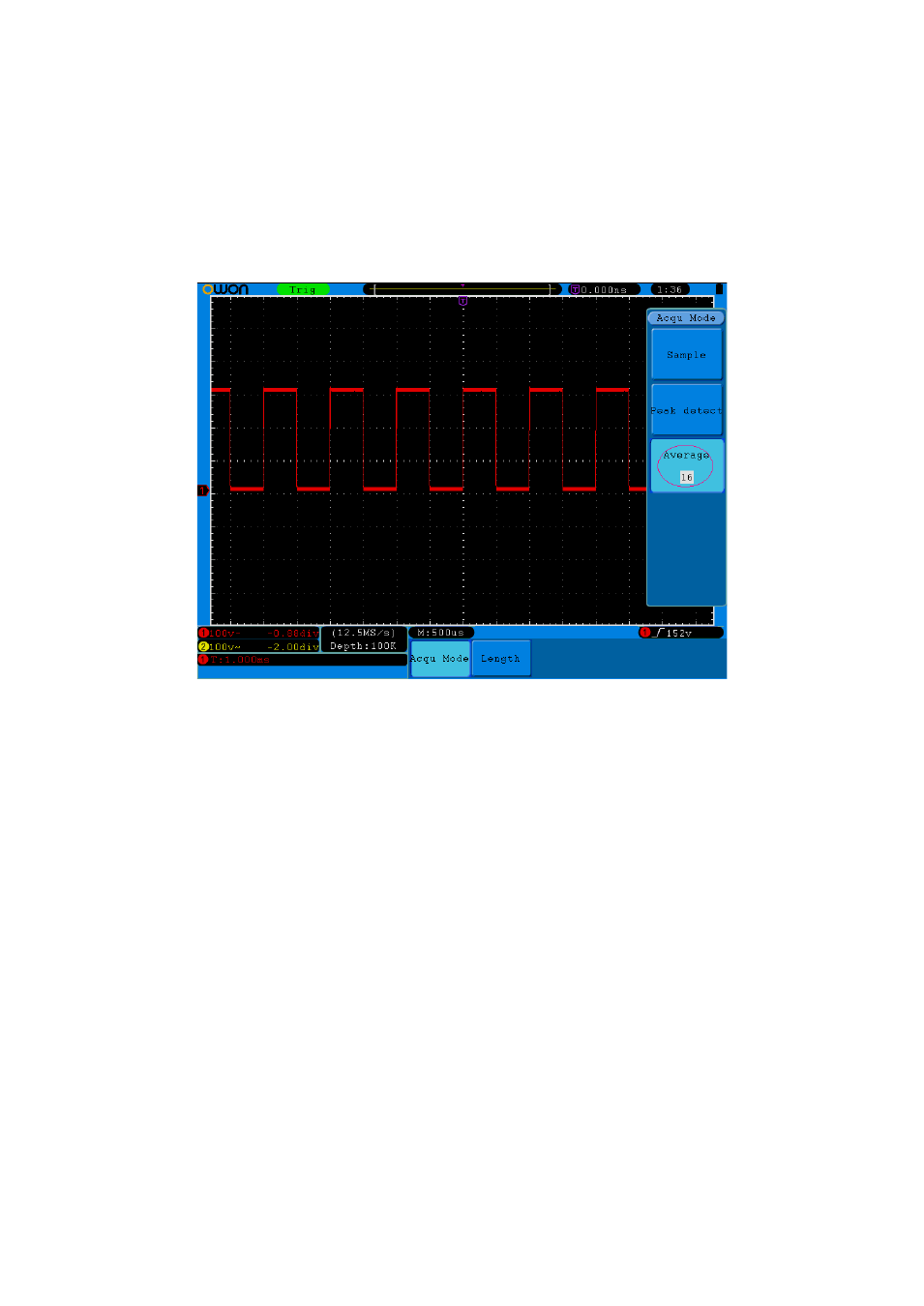Example 5: application of x-y function – OWON SDS Series User Manual
Page 98

7.Demonstration
(2) Press the H1 button to display ACQU Mode menu.
(3) Press the F3 button, turn the M knob and observe the waveform obtained from
averaging the waveforms of different average number.
User would see a much reduced random noise level and make it easy to see more
details of the signal itself. After applying Average, user can easily identify the burrs
on the rising and falling edges of some part of the signal (see Figure 7-5).
Figure 7-5 Reduce Noise level by using Average function
Example 5: Application of X-Y Function
Examine the Phase Difference between Signals of two Channels
Example: Test the phase change of the signal after it passes through a circuit network.
X-Y mode is a very useful when examining the Phase shift of two related signals.
This example takes you step by step to check out the phase change of the signal after
it passes a specified circuit. Input signal to the circuit and output signal from circuit
are used as source signals.
For the examination of the input and output of the circuit in the form of X-Y
coordinate graph, please operate according to the following steps:
(1) Set the probe menu attenuation coefficient for 10X and that of the switch in the
probe for 10X (see "How to Set the Probe Attenuation Coefficient" on P14).
(2) Connect the probe of channel 1 to the input of the network and that of Channel 2
to the output of the network.
(3) Push down the Autoset button, with the oscilloscope turning on the signals of the
two channels and displaying them in the screen.
93